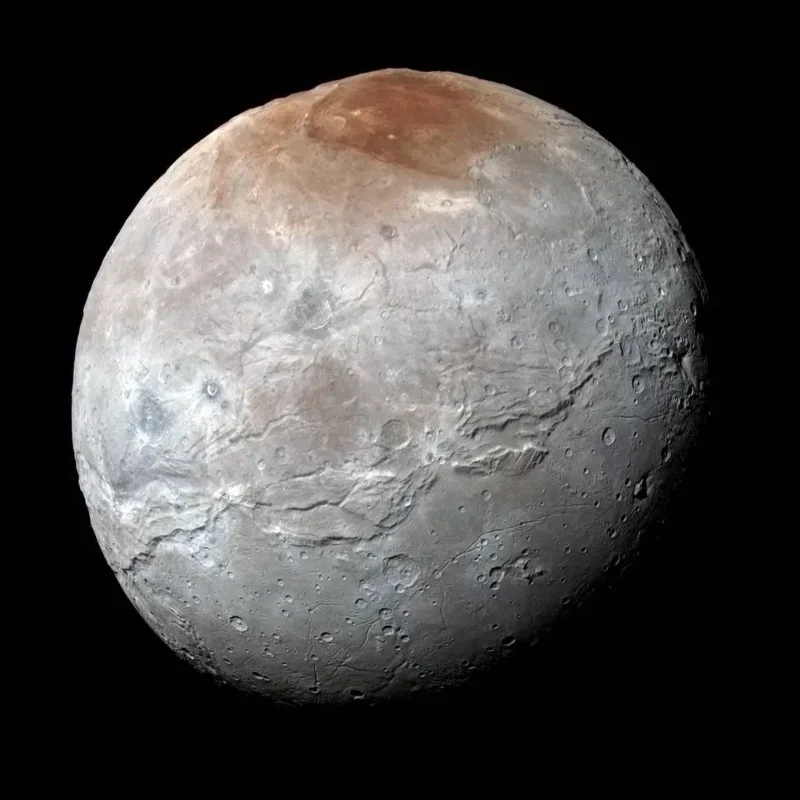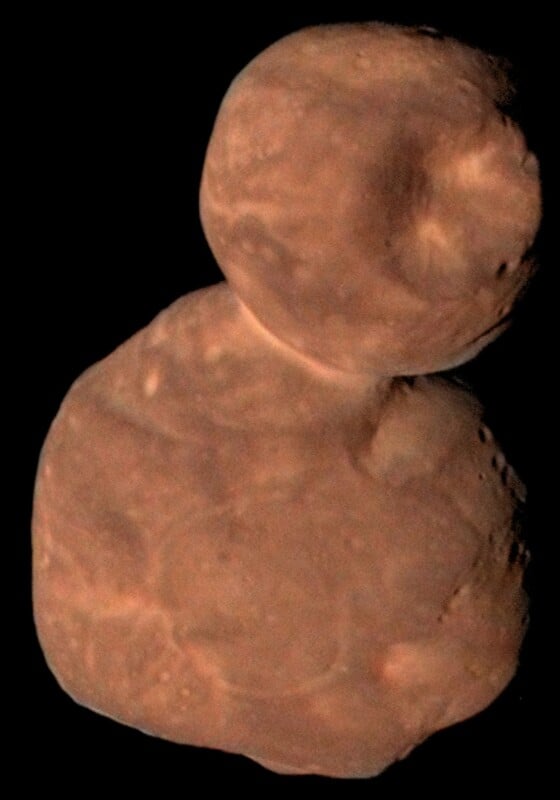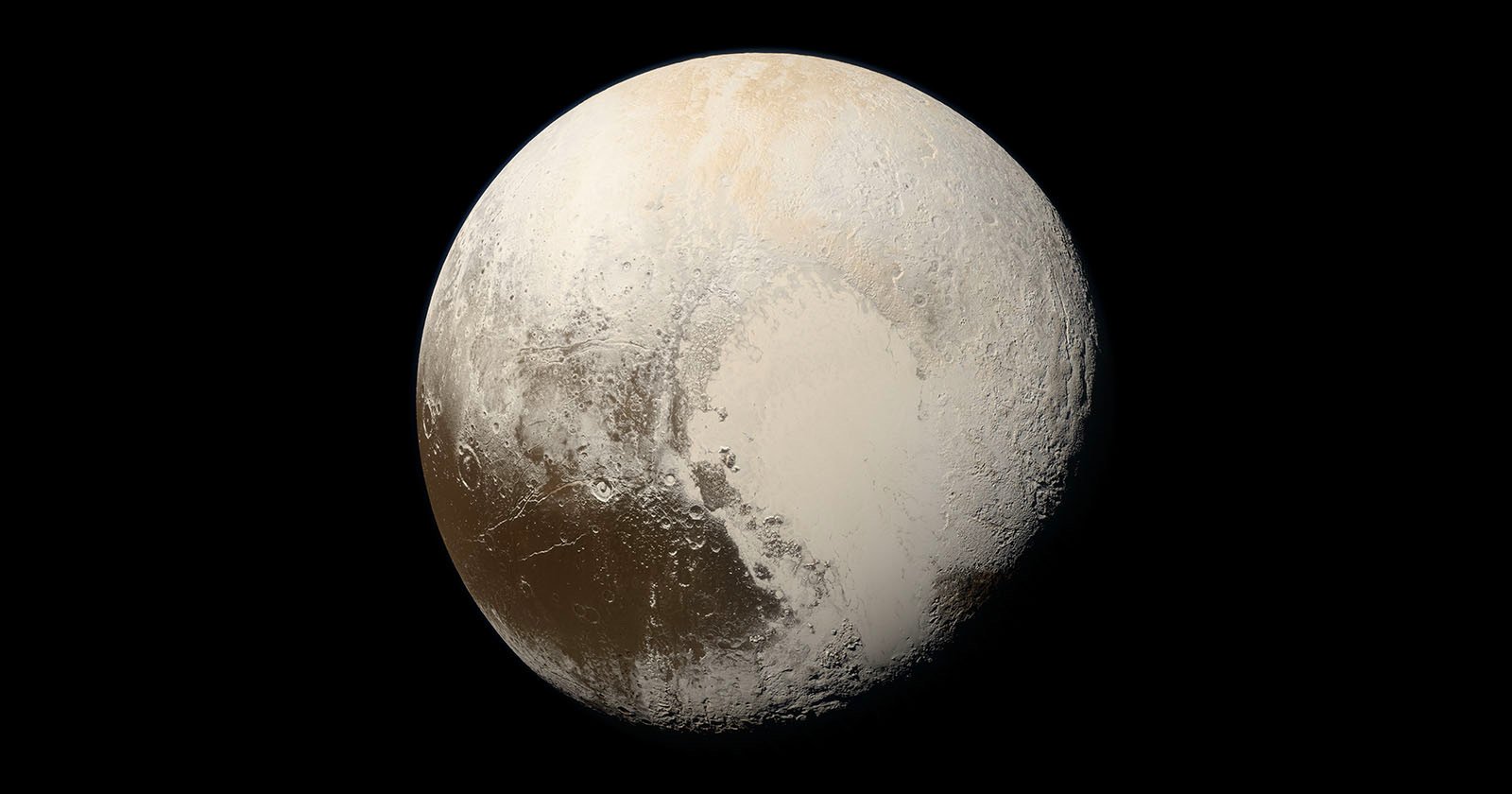It has been a decade since NASA’s New Horizons spacecraft made its historic flyby of Pluto, delivering humanity’s first close-up look at the solar system’s distant dwarf planet.
Launched on January 19, 2006, aboard an Atlas V rocket, New Horizons spent nine and a half years traversing nearly 9 billion miles through the solar system before reaching Pluto. The spacecraft made history on July 14, 2015, capturing high-resolution images and data that transformed scientific understanding of the icy world.
NASA has re-published the photo exactly 10 years later to celebrate the mission, which revealed a complex landscape, including Pluto’s now-iconic heart-shaped plain, Sputnik Planitia, rich in nitrogen and methane ice. This feature, along with evidence of cryovolcanoes and a possible subsurface ocean, indicates that Pluto is a geologically active body, contrary to previous beliefs.
The image was captured on New Horizons’ Multispectral Visible Imaging Camera (MVIC). Refined calibration efforts have allowed scientists to produce a color rendering that closely resembles what the human eye would perceive. It took over 15 months to downlink the mission’s full dataset of 6.25 gigabytes due to the spacecraft’s distance — about 4.5 light-hours from Earth — and a transmission rate of just 1–2 kilobits per second.

“Such a lengthy period was necessary because the spacecraft was roughly 4.5 light-hours from Earth and it could only transmit 1–2 kilobits per second,” NASA explains.
The mission’s success was hard-won. According to The Planetary Society, efforts to launch a spacecraft to Pluto faced nearly two decades of resistance due to cost concerns. In 2002, the White House attempted to cancel New Horizons during early development, but congressional intervention, spurred by public and scientific outcry, secured the mission’s funding.

Following its Pluto flyby, New Horizons continued into the Kuiper Belt. In January 2019, it flew past Arrokoth, the most distant object ever visited by a spacecraft. This contact provided insight into the early solar system and helped secure a mission extension through at least 2029, when the spacecraft is expected to exit the Kuiper Belt.
Threat to New Horizons
But as NASA commemorates this milestone, the mission’s future hangs in the balance due to proposed budget cuts that could prematurely end its extended operations.
The White House’s proposed 2026 budget includes a $6 billion cut to NASA’s overall funding, slashing the agency’s planetary science budget from $2.7 billion to $1.9 billion. If enacted, the cuts could terminate dozens of missions, including New Horizons.
“The New Horizons mission has a unique position in our solar system to answer important questions about our heliosphere and provide extraordinary opportunities for multidisciplinary science for NASA and the scientific community,” Nicola Fox, associate administrator for NASA’s Science Mission Directorate, said in 2023 per Gizmodo.
